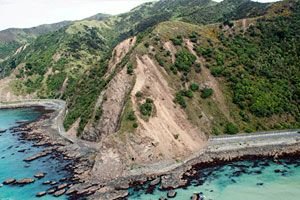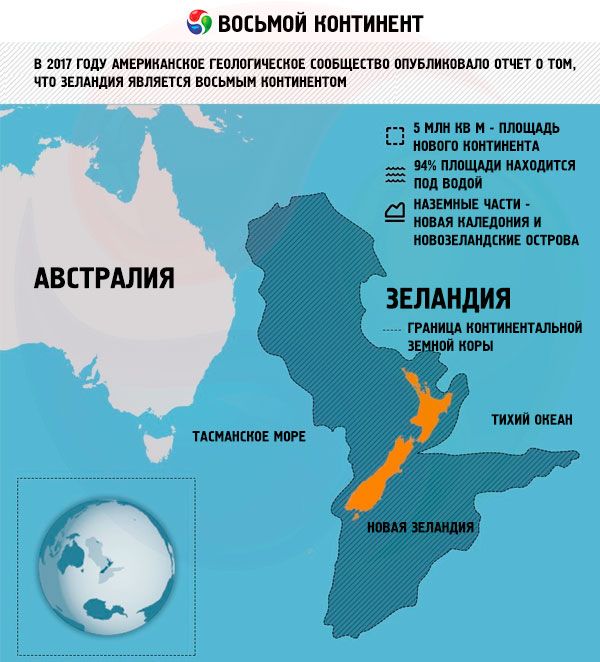
All iLive content is medically reviewed or fact checked to ensure as much factual accuracy as possible.
We have strict sourcing guidelines and only link to reputable media sites, academic research institutions and, whenever possible, medically peer reviewed studies. Note that the numbers in parentheses ([1], [2], etc.) are clickable links to these studies.
If you feel that any of our content is inaccurate, out-of-date, or otherwise questionable, please select it and press Ctrl + Enter.
Sensational discovery: scientists have discovered a new continent
Last reviewed: 02.07.2025
 ">
">Geologists have proven the existence of another continent, which currently lies in the waters of the ocean and rises above it as the shores of New Zealand.
The continent, according to scientists, is a large landmass that was separated from Gondwana many millions of years earlier (Gondwana is the oldest supercontinent in the southern hemisphere, which included Africa, Zealandia, Australia, Antarctica, South America, Madagascar, India and Arabia).
This news became public knowledge thanks to publication in the GSA magazine.
Nick Mortimer, a researcher at the Dunedin Institute of Geology and Nuclear Physics (New Zealand), says that over the past decades, experts have collected a lot of evidence about which continent the New Zealand islands belong to.
Some scientists even shared their opinion that the discovery already allows us to separate the islands and the water-based land surface into a separate continent. "We have analyzed all the evidence and can state with 100% certainty that the "Zealand" continent exists."
Over the past decades, experts have done a lot of work, which has allowed them to disrupt the generally accepted ideas about the continental face of the Earth. For example, not long ago, geologists confirmed the ancient existence of the supercontinent zone of Mauritia (currently the location of the island of Mauritius). This continent was subjected to natural destruction and disappeared many hundreds of thousands of years ago.
The islands of New Zealand differ from the above example in that their origin cannot be explained by either volcanic or tectonic nature. Before this discovery, geographers supposedly included New Zealand in the Australian continent, which is the largest part of the supercontinent Gondwana.
However, this theoretical assumption is now recognized as a mistake. Zealandia definitely belongs to other landscape plates that had an area no smaller than Australia. It’s just that at a certain moment this plate sank into the waters of the Pacific Ocean.
This information was partially confirmed by scientists from other countries: the layers of continental crust deposits inside the New Zealand islands are unique and isolated, and differ significantly from the structure of the Australian plate – that is, they were formed separately.

Presumably, the ancient "Zealand" plate cracked at a certain time, which caused the continent to slowly sink under water. The size of this plate is approximately 94% larger than the visible parts of New Zealand and Caledonia, and is at least 4.9 million square kilometers. Such data was published by the Geological Society of the United States.
However, at present, many experts are skeptical about this discovery. Many have requested surface and underwater relief photographs, geophysical field measurements, satellite photographs to be able to assess the tectonic outlines. Additionally, an independent group of experts should be involved with further discussion of the discovery at the regular Congress of Geologists.

 [
[